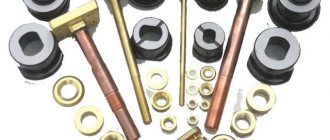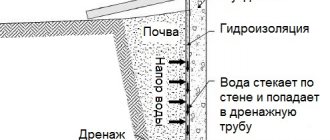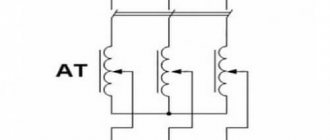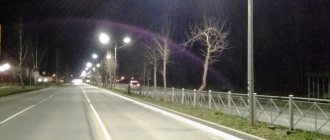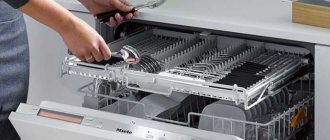High-quality, timely repair of the electric motor rotor will maximize its service life, minimizing the likelihood of breakdowns. The structural complexity of this equipment requires special attention to professional repair. Below we will consider how to repair and rewind an electric motor rotor, briefly outlining the features of the services offered, while recalling the types of electrical installations.
Electric motor rotor repair - key steps
Qualified performance of rotary electric repairs. the engine will provide factory efficiency, restoring the original functionality of the device. To achieve impeccable quality, our craftsmen strictly observe all the details of technological operations in accordance with the technical instructions of the manufacturer of a specific model of installation. Only experienced specialists can repair the electric motor rotor, guaranteeing no breakdowns and a long uninterrupted operating period while observing the operating rules.
Regardless of the type of service chosen, rewinding an electric motor rotor involves the following operations:
- dismantling and dismantling of electrical installations;
- removal of old windings and failed mechanisms;
- restoration of insulating layers, windings, lamellas and other parts;
- replacement of bearings followed by painting of the housing;
- electrical assembly engine;
- visual assessment of winding quality;
- final diagnostics of the device.
It is worth understanding that the exact list of stages depends on the degree of damage and customer requirements. We offer a full range of repair services, including, in addition to motor rewinding and motor rotor repair, restoration of explosion-proof models after complex emergency situations.
Types of repair services
- Current repair of the electric rotor. engine inspection is carried out in order to eliminate various malfunctions by replacing or restoring (if possible) damaged elements.
- Technical - involves a routine check of the functionality of electrical equipment. If necessary, the electric rotor is rewinded. engine, as well as restoration of failed components.
- Urgent - performed in emergency cases and as quickly as possible. The cost of rewinding the electric motor rotor in this case is higher due to unscheduled work. Major - involves the complete restoration of the electric motor rotor with a detailed check of each structural element. This approach ensures maximum efficiency and functionality during long-term operation.
Asynchronous motor repair
There are many types of electric motors and each has its own characteristics when carrying out repair work. So in the case of repairing an asynchronous electric motor, there are some characteristic features. Any engine can be subject to electrical or mechanical problems.
As for mechanical failures, this is mainly a problem situation with the bearing. This is characterized by a loud noise resembling knocking and vibration of the appliance in which the motor is installed.
If there is a malfunction, it must be corrected as soon as possible. Failure to comply with this condition can lead to problems with the shaft and, as a consequence, winding malfunctions.
With all this, in most cases, with problems of a mechanical nature, the electrical part can also jam.
That is why even with a complete mechanical repair, an electrical check is required. This is very easy to do with a multimeter.
When breakdowns occur, this is usually noticeable to the naked eye, as the device emits an unpleasant odor and buzzes. If it was not possible to notice the malfunction, but the operation is not the same as usual, then complete disassembly will be required.
Please note that before disassembling, you need to check the electric motor for breaks. If one is installed, then the coil will definitely need to be rewinded.
Types and features of serviced electric motors
- Crane electric machines are used in the design of lifting equipment and cranes. They are distinguished by a closed explosion-proof housing at high frequencies and magnetic fluxes, which ensures maximum overload capacity. By type of power supply, installations can be either AC or DC.
- Traction high-voltage electric motors are adapted to harsh operating conditions at extreme conditions. Powerful units are designed to drive vehicles and industrial equipment. Despite the massive design, the stages of repairing the rotor of an electric motor of this type are similar to those for repairing other versions of machines.
- Elevator installations are used to drive winches and elevators. The line of these machines is distinguished by a large list of modifications, including brushless versions, as well as synchronous and asynchronous models. Rewinding of the rotor of an electric motor of this type can be carried out at the site of operation of the equipment. Rotary motors can be either three-phase or single-phase.
Approximate prices for rewinding an electric motor rotor are indicated in the price list. To find out the cost of the service taking into account the type of model, frequency, kW, nature of the breakdown and discount, contact the company manager. Call right now and get impeccable results in a short time!
Electric motor rotor repair prices
| Power, kWt) | Rotation speed, rpm | |||
| 3000 | 1500 | 1000 | 750 | |
| Up to 1.5 | 2740 | 2806 | 3417 | 4057 |
| 2.2 | 3090 | 3245 | 4154 | 4897 |
| 3 | 3642 | 3901 | 4973 | 5179 |
| 4 | 5012 | 4652 | 5413 | 6804 |
| 5.5 | 5296 | 5301 | 5978 | 7511 |
| 7.5 | 6630 | 6919 | 7312 | 11021 |
| 11 | 8139 | 8147 | 9937 | 13182 |
| 15 | 12088 | 12049 | 11737 | 14803 |
| 18,5 | 13001 | 13345 | 15217 | 24450 |
| 22 | 15057 | 15805 | 23408 | 25522 |
| 30 | 17648 | 18202 | 25857 | 29275 |
| 37 | 23803 | 25949 | 30677 | 40080 |
| 45 | 29055 | 28737 | 38389 | 48070 |
| 55 | 34546 | 32811 | 41481 | 60759 |
| 75 | 44670 | 48812 | 64472 | 82899 |
| 90 | 47893 | 51078 | 78166 | 99898 |
| 110 | 67202 | 73052 | 95759 | 122517 |
| 132 | 80848 | 87962 | 114110 | 147423 |
| 160 | 98012 | 106439 | 138740 | 179116 |
| 200 | 123101 | 132548 | 173924 | ———- |
| 250 | 154120 | 167435 | ———- | ——— |
| 320 | 237156 | ————— | ———- | ———— |
| kW | 3000 rpm | 1500 rpm | 1000 rpm | 750 rpm |
COEFFICIENTS USED IN THE CALCULATION:
- Single-phase - 1.5;
- Foreign production -1.5;
- Explosion-proof – 1.3;
- Urgent – 1.5;
- Two-speed – 1.5; Two-speed with independent windings – 2.
- Old model type AO, A, VAO -1.5
Repair of shafts of electric motors and electrical machines
Cracks in the shaft material can be welded (with subsequent surface treatment) only if they extend deeper into no more than 5-10% of the shaft diameter and occupy no more than 10% of the circumference (for transverse cracks) or no more than 10-15 % of the length of the shaft step on which they are found (for longitudinal cracks). If the shaft is broken, instead of the broken part, a new part is made with an allowance for processing. The old and new parts of the shaft can either be tapered and butt welded, or connected by shrink fit. To do this, a tail and a corresponding hole are machined in one part of the shaft, preheated to a temperature of 200 - 300 °C. An additional welding seam can be applied at the joint. To avoid bending of the shaft during welding, pay attention to uniform heating of its diametrically located parts of the shaft. Shaft bending causes runout of the active steel bore, commutator surface or slip rings in relation to the shaft journals. These defects are detected by an indicator when installing the rotor (or armature) on the lathe. Minor runout, scratches, nicks and roughness of the shaft journals are eliminated by grinding and polishing manually or on a machine. Significant nicks are eliminated by grooving the shaft, followed by grinding and polishing. A strongly bent shaft is straightened on a lathe using levers, jacks or using a screw press. If, as a result of processing, the diameter of the shaft journals has significantly decreased (more than 6% of the factory diameter), it is increased by metallization followed by subsequent processing. After repair, the rotors of electrical machines, complete with fans and other rotating parts, are subjected to static or dynamic balancing on special balancing machines. Static balancing.
For balancing, a machine is used, which is a support structure made of profile steel with trapezoidal prisms installed on it.
Static balancing of the rotor on the machine is carried out in the following sequence. The rotor is placed with the shaft journals on the working surfaces of the prisms. Rolling on the prisms, it takes a position in which the heaviest part of it is at the bottom. To determine the point on the circle at which the balancing weight should be installed, the rotor is rolled 5 times, after each stop, marking the lower “heavy” point with chalk. By marking the middle of the distance between the outer chalk marks, the point of installation of the balancing weight is determined. A properly balanced rotor, after rolling in one direction and the other, should be in a state of indifferent equilibrium in all positions. Dynamic balancing.
With the static balancing method, a balancing weight is installed at only one end of the rotor, thus eliminating static imbalance. However, this balancing method is only suitable for short rotors of low-speed machines with low power. To balance the rotor masses of large electrical machines (power over 50 kW) with a high rotation speed (more than 1000 rpm), dynamic balancing is used, in which a balancing weight is installed at the ends of the rotor. This is explained by the fact that when the rotor rotates at a high frequency, each end of it has an independent runout caused by unbalanced masses. Repair of bearing shields and frames. Cracks, wear of bearing seats and other damage may occur on bearing shields and frames. Large cracks that extend to the bearing seat are usually not repaired. The shield is replaced with a new one. Small cracks in the cast iron body of the shield are repaired by welding using one of the following methods. Cracks in the cast iron body are melted with an oxy-acetylene flame or welded with a cast iron electrode. In both cases, the body is heated to 700 - 800 °C, which gives a reliable result, since melting or welding is carried out with a heated shield in special furnaces and the welded part remains in the furnace until it cools completely for 24 - 80 hours. Cracks can be eliminated faster by brewing them with a cold copper electrode. The latter is wrapped in a strip of tinplate and lubricated with liquid glass or OMM-25 grease, the deposited copper is sprinkled with brown, and the resulting seam is forged. After the welded part has cooled, the copper deposits are cleaned off. Weld the crack as follows. Along the crack on both sides, steel pins are screwed into the threads in a checkerboard pattern, passing through the walls of the housing. The ends of the studs on each side of the lid are connected and welded with steel electrodes. This method of connecting cracks is used for parts that are not subject to large vibration or shock loads. To prevent the crack from spreading further during welding, its end is drilled, and to obtain its seam, the edges of the walls of the welded crack are carefully (using a chisel) beveled along the entire length at an angle of 45 - 60°. The dimensions of the shield holes are restored by pressing in the bushings, welding or metallization. Before metallization, a thread is cut in the hole, then a layer of metal is applied with a processing allowance of 0.5 - 0.8 mm per side. When metallizing, a layer of metal is applied to the surface to be restored with a gun, in which a wire with a diameter of 1 - 1.5 mm is melted and blown out with a stream of compressed air. The advantage of this method is that the applied layer of metal does not create thermal stresses on the surface, as when surfacing by electric welding.
| Repair of stator and rotor cores |
| Assembly of electric motors and installation of plain bearings |
| Disassembly of electric motors |
